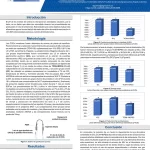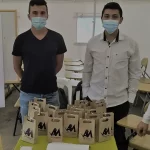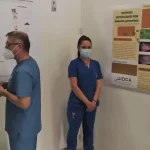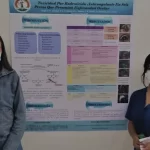Semillero
Sistemas de Información, Genética y Modelación Agropecuaria – SIGMA
Sistemas de Información, Genética y Modelación Agropecuaria – SIGMA
Grupo: CIENCIA ANIMAL
Ofrecer una alternativa de formación académica e investigativa a los estudiantes del sector agropecuario de U.D.C.A mediante el desarrollo de trabajos de investigación innovadores y su posterior aplicación tecnológica en el sector comercial.
Misión
El semillero de investigación Sistemas de Información, Genética y Modelación Agropecuaria se consolidará dentro de la Facultad de Ciencias Agropecuarias como una de las estrategias más importantes para promover la inclusión de estudiantes en procesos de investigación y aumentar los procesos de transferencia tecnológica dirigidos al sector agropecuario del país.
Visión
El semillero de investigación en Sistemas de Información, Genética y Modelación Agropecuaria será reconocido en la U.D.C.A como un semillero de excelencia académica y compromiso con la formación integral y profesional de estudiantes de las ciencias agropecuarias.
Objetivos específicos:
- Consolidar la formación profesional de estudiantes de las ciencias agropecuarias dentro de un ambiente de alta calidad a nivel personal, técnico y científico.
- Fortalecer la pertinencia de las investigaciones y la aplicación de resultados en relación con las necesidades directas e indirectas del sector agropecuario.
- Promover en la formación de estudiante el uso de la actividad investigativa como una herramienta transversal de alta aplicabilidad para la solución de problemas en campo.
- Fortalecer la estructura de investigación de la línea de producción Animal del grupo de investigación de Ciencia Animal.
- Generar mayor cultura de investigación de los estudiantes de la Facultad de Ciencias Agropecuarias.
- Generar ideas y resultados de nuevo conocimiento en áreas de genética, mejoramiento y modelación aplicada a las ciencias agropecuarias.
Líneas de Investigación
-
-
- Sistemas Sostenibles de Producción Animal
-

COORDINADORES
PRODUCTOS DESTACADOS
Selection indexes to optimise genetic and economic progress in Colombian Blanco Orejinegro cattle
The use of selection indexes optimises genetic and economic gains in a population. The objective of this study was to propose and compare selection indexes built with economic and statistical methodologies in Colombian Creole Blanco Orejinegro breed. Genetic, phenotypic and economic information of the breed were used to design and test the selection indexes. The weights of each selection criteria (weight at 24 months of age, age at first calving, calving interval) were estimated using phenotypic variances, eigenvectors from a principal component analysis and economic values obtained through a deterministic bio-economic model. The selection criteria with the highest weight was weight at 24 months of age, with values of 0.56 and 0.034 USD using eigenvectors and phenotypic variance, respectively. The calving interval had the highest weight using the bio-economic model, with a value of -1.3 USD. The greatest profit due to genetic selection was obtained using the economic values as weights, which increased the average expected profit to a value of 18.76 USD/cow/year. The selection indexes calculated from phenotypic and eigenvectors do not rank animals similarly to the economic selection index. It could generate less genetic and economic progress in the national selection programme for the Blanco Orejinegro breed.
Selection indexes using principal component analysis for reproductive, beef and milk traits in Simmental cattle
Selection indexes in dual-purpose cattle should include beef, milk and reproductive traits. The principal component analysis is a multivariate technique that allows researchers to explore relationships between explanatory variables and traits of interest. The objective of this study was to construct selection indexes for tropical dual-purpose Simmental cattle based on principal components. The evaluated traits were weight at 8 months of age; age at first calving; cumulative first-lactation milk yield at 60, 150, 210 and 305 days; and first calving interval. The selection indexes were estimated as the sum of the products of the estimated breeding values for the seven traits times their respective eigenvectors for the first three principal components. The three selection indexes from principal components analysis generated favourable expected genetic progress for all the traits. However, a selection index with a high expected genetic progress for all traits could not be obtained. The principal component analysis allows breeders to have a selection index that simultaneously improves milk, beef and reproductive traits in dual-purpose Simmental cattle. Because a selection index yielding high expected genetic progress for all traits could not be achieved, the decision to use a specific selection index will depend on the specific conditions of the market, the local needs and the farmer preference.
Economic values for index improvement of dual-purpose Simmental cattle
The selection index methodology is the best approach to increase profit in animal production by genetic selection due to the use of economic values for breeding goals. The aim of this study was to derive economic values through a deterministic bio-economic model in order to construct an economic selection index for dual-purpose Simmental cattle. Phenotypic, genetic and economic information from the Colombian Simmental genetic evaluation were used in this investigation to design a base production system. The economic values for weight at eight months of age, age at first calving, first lactation milk yield and first calving interval were obtained by calculating the partial derivatives of farm profit with respect to each trait, the relative economic importance for each trait was 43.45, 15.29, 5.33 and 35.93%, respectively. By increasing the selection index by one dollar, the milk yield contributed the most to genetic gain with an increase of 10.36 L, while the lowest genetic gain was found for the weight at eight months of age with an increase of 0.088 kg. The milk yield had the greatest economic contribution worth 0.642 dollar for each USD of increase in the index. The economic values and the final selection index provided favorable genetic and economic progress for milk, beef and reproductive traits in Simmental cattle under tropical conditions. Likewise, estimated economic values can be used to make decisions on the selection of foreign bulls to similar Simmental production systems.
Linkage disequilibrium, population stratification and patterns of ancestry in Simmental cattle
Genetic evaluations in cattle using the single-step genomic best linear unbiased predictor
Conventional genetic evaluations have been framed on estimated breeding values from equation systems of mixed models that consider simultaneously random and fixed effects. Recently, the development in genome sequencing technologies has allowed obtaining genomic information to include in genetic evaluations in order to increase the accuracy and genetic progress, and decrease the generation interval. The single-step best linear unbiased predictor is a methodology developed in the last years and accepts including genomic information replacing the genomic relationship matrix by a matrix that combines relationship by pedigree, and the genomic relationship of a genotyped population, allowing the estimation of breeding values for non-genotyped animals. The aim of this review article was to describe the methodology and its recent progress, as well as to know some of the strategies that could be used when the number of genotyped animals is low.





